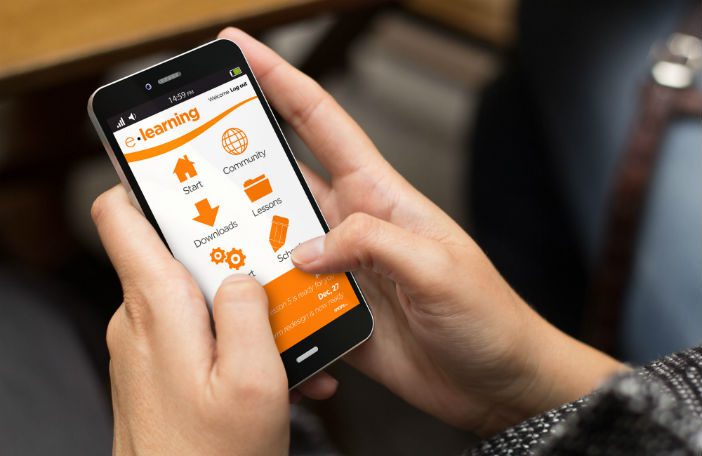Imagine learning a new leadership skill while waiting to board a plane. You watch a reenactment of a common managerial dilemma. The video plays vertically, allowing you to hold your phone naturally. It ends with a challenge: How should the protagonist give negative feedback?
Options appear on a Tinder-style interface. You swipe right. A follow-up video demonstrates the consequences of your decision. Your correct score unlocks another Snapchat-style trophy. Only eight more trophies to win that Arizona vacation.
Next, you watch a few Instagram-style “stories” of colleagues sharing tips. You enter the number of times you gave feedback to team members this week; the app keeps track of them for you just like the popular fitness apps. Time to board the plane; your five-minute microlearning session is over.
This is the promise of microlearning: relevant, modularized and personalized learning at your convenience. There are other benefits: Reduce cognitive overload; increase retention of difficult concepts through spaced repetition; fit in the training between the distractions of your digital life.
Sadly, that’s not what most microlearning looks like today. I attend many industry conferences and have seen untold microlearning presentations over the past few years. Most of them are modeled on the classroom, complete with lectures and quizzes, and designed for the desktop. The mobile version is an afterthought at best. It is completely out of step with what employees expect, as they have spent more time on mobile devices than a desktop for years. A 2016 research report from Mary Meeker, a partner at venture capital firm Kleiner Perkins Caufield & Byers puts average mobile digital media time at 51percent and desktop at 42 percent.
New research sheds light on the problem of poorly designed mobile experiences in the workplace as a real problem. “Functional but Unfriendly, a Study of Enterprise Mobile App User Experience,” published this year by ArcTouch found that only 12 percent of employees use enterprise mobile apps. Among the people who use them, a whopping 70 percent don’t consider them to be intuitive, and only 13 percent said they were elegant. Employees rated “intuitive” and “elegant” user experience as the two most important aspects that determine if they will use an app. Yet, those are the worst performing aspects of current enterprise mobile apps.
There’s a huge opportunity for learning organizations to unleash the power of microlearning on the mobile device. But they have to avoid the problems associated with enterprise apps. Successful mobile microlearning has to take a mobile-first approach, with intuitive and elegant user experiences, including:
- Leverage the touch interface. For instance, replacing the tiny radio buttons with swipe interface.
- Produce videos shot vertically to fit the phone. Research from Snapchat suggests that vertical video on smartphones has nine times higher viewership than horizontal video.
- Tell engaging stories. It’s not a coincidence that Snapchat, Instagram and most recently Facebook’s most popular feature is called “stories.”
- Create games or scenarios that stoke participation through problem solving and accomplishment. Leveling up to increasingly more difficult tasks keeps players focused and engaged.
- Make learning social; share pictures, video, scores and stories.
- Use all the functionality of the phone, the camera, gyro, and GPS, to — for instance — create augmented reality experiences or scavenger hunts.
- Don’t restrict yourself to a mobile optimized site when Yahoo Flurry analytics report 90 percent of mobile media time is spent in apps.
Instead of asking if your microlearning needs to be mobile, perhaps you should ask if it needs to be desktop enabled at all. The exploding popularity of the 1,000-plus fitness apps on the market proves how effectively mobile apps can change behavior.
A study published by Journal of Medical Internet Research in August 2015 found that people who use fitness apps are much more active compared to non-users. These fitness apps change behavior by tracking performance, providing step-by-step instructions and providing fun-filled competition. Adapting these and other principles from the consumer app industry to learning could be a game changer.
Microlearning done right can reshape learning, but only if we take cues from Pokémon GO, Tinder, MyFitnessPal, Snapchat and Instagram. Create useful, relevant, intuitive, elegant, fast, fun and addictive microlearning experiences. A consumer-app mindset will help learning organizations integrate themselves into employees’ lives with learning nuggets that are relevant and memorable long after the three-minute session is over.
Anders Gronstedt is the president of Gronstedt Group, a digital training agency. Comment below or email editor@CLOmedia.com.















